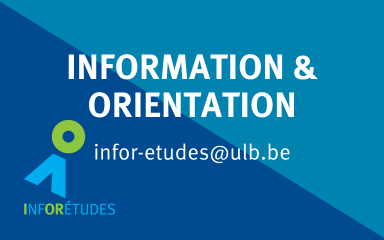
- Accueil
- EN
- Studying at ULB
- Find your course
- sciences
-
Share this page
Master in Statistics : General
- academic year2024-2025
Accéder aux sections de la fiche
Call to actions
-
Programme titleMaster in Statistics : General
-
Programme mnemonicMA-STAT
-
Programme organised by
- Faculty of Sciences
-
Degree typeMaster 120 credits
-
Tier2nd cycle
-
Field and branch of studySciences and technics/Sciences
-
Schedule typeDaytime
-
Languages of instructionenglish / french
-
Theoretical programme duration2 years
-
CampusPlaine/Solbosch
-
Category / TopicSciences and technics - Sciences
- Jury PresidentMaarten JANSEN
- Jury SecretaryThomas VERDEBOUT
-
Contact e-mail
-
Contact telephone
-
Additional information
Presentation
Details
General information
Degree typeMaster 120 credits
Theoretical programme duration2 years
Learning language(s)english / french
Schedule typeDaytime
CampusPlaine/Solbosch
Category(ies) - Topic(s)Sciences and technics - Sciences
Organising faculty(s) and university(ies)
Contacts
Succeed in your studies
ChooseThe information and guidance counsellors at the InfOR-études service will help you choose your studies throughout the year.
SucceedTake part in preparatory courses or get help to succeed, before or during your studies.
Get helpApply for financial aid, look for accommodation or a student job, get support for your specific needs.
Presentation
Programme objectives
The Master in Statistics teaches students the difficult art of transforming data into information and helping decision-makers and researchers in other fields analyze this information most efficiently. The programme offers three tracks, with specific learning outcomes and objectives:
-
Theoretical statistics
-
Applied statistics
-
Economics and statistics
-
The track in theoretical statistics provides students with the methodological knowledge required to design new statistical procedures and pursue doctoral studies in probability or statistics;
-
The track in applied statistics prepares students for a career in statistics (in experimental sciences, human sciences, or in the industry) or for doctoral studies in applied statistics;
-
The track in economics and statistics offers first-class education in statistics, quantitative economics, and econometrics. This programme is unique in French-speaking Belgium and is taught in English, attracting foreign students from all around the world.
Teaching team and methods
Most courses are offered as lecture classes. The small number of students in the programme, however, eliminates the usual drawbacks of this teaching method and makes interactivity possible.
Of course, the curriculum also involves courses with homework and reports.
Finally, computers play an important role in the programme, not only in courses dedicated to statistical software applications or computational statistics, but also in other courses where computers are used to illustrate theories and to put into practice the methods taught.
Programme's added value
Statistics finds its origin both in mathematics and in applications, and is virtually present in all branches of human activity. This explains that statistics courses are found in the curricula of all faculties–hard sciences, human sciences, medicine, engineering. This diversity, which is expressed in the curriculum of the Master in Statistics, is one of the most attractive characteristics of careers in statistics.
The track in economics and statistics is organized in collaboration with ECARES (European Center for Advanced Research in Economics and Statistics – www.ecares.org). It offers first-class education in statistics, quantitative economics, and econometrics.
International / Openness
In addition to traditional exchanges programmes that allow students to spend the first or second block in a foreign university, strong relationships exist with the Université Pierre-et-Marie Curie (Paris 6), which has one of the best statistics programmes in France.
Access conditions
Programme
The Master in Statistics is a two-year programme organised into two ‘blocks’. The first block includes (i) required courses, (ii) courses specific to each specialisation (theoretical statistics, applied statistics, or economics and statistics; see above), and (iii) possibly elective courses. The second block is more flexible, and includes the Master's dissertation (which may involve a work placement), participation to seminars, a course on statistical software applications, and several elective courses.
What's next ?
Prospects
Statisticians are found in all industries.
Many jobs involving statistics are available in the pharmaceutical industry, clinical trials, and agribusiness, but also in banks, insurance companies, and official statistics institutes.
There are also many opportunities in research (both theoretical and applied) in statistics, especially in the academic sector.
